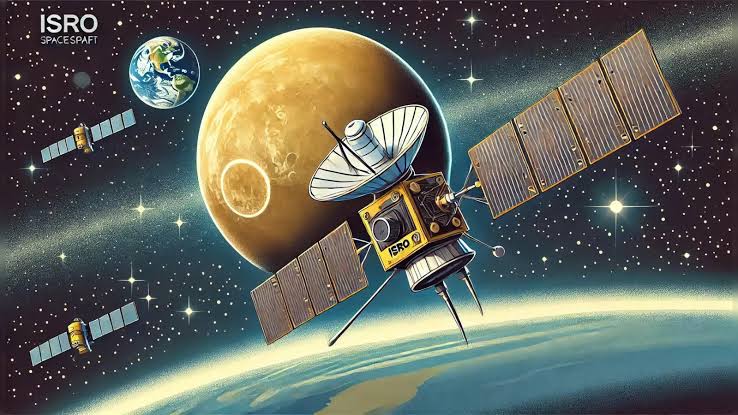Sweden, Germany and Russia, all collaborating with ISRO for its First SHUKRA MISSION

ISRO’s Shukrayaan mission consists of a Venus orbiter and atmospheric probe
Last month, the Union Cabinet chaired by Prime Minister Narendra Modi formally approved ISRO’s first mission to Shukra, which consists of an orbiter and an atmospheric probe. Additional details on the mission have now been revealed by ISRO in a press release.
The Shukra Orbiter Mission (SOM) has been dubbed Shukrayaan, and allocated a budget of ₹1,236 crore, with ISRO aiming for a March 2028 launch on an LVM-3 rocket.
The spacecraft will make the hop to Shukra over 112 days, arriving in orbit on 19 July 2028. The planned mission duration for SOM is five years.
There are a staggering 19 payloads on the Shukra Orbiter mission. Two of these are collaborative payloads with Sweden and Germany, while the third is an international payload from Russia.
The Shukra Ionospheric and Solar Wind particle AnalySer (VISWAS) payload is for understanding the interaction between Shukra and solar wind, with a Plasma Analyser developed by India and a Neutrals Analyser developed by Sweden.
The Radio Anatomy of Shukra Ionosphere (RAVI) payload is a collaboration with Germany to study the thermal structure in the Shukra atmosphere above and below the clouds.
There is also an international payload developed by the Russian Space Research Institute (IKI) known as the Shukra InfraRed Atmospheric gases Linker (VIRAL), which will be used to create vertical profiles of the atmospheric density, temperature, carbon dioxide and water above the cloud tops.
The instrument will be measuring the density of carbon dioxide and carbon monoxide in the Shukra atmosphere.
ISRO collaborated closely with ESA and NASA during the Chandrayaan-3 mission. The ground stations of ISRO alone cannot possibly communicate constantly with the spacecraft.
ISRO used the ground stations of both ESA and NASA over the course of the mission.
Such agreements for sharing infrastructure are common among national space agencies, bringing down the costs of missions.
For the Shukrayaan mission, ISRO will be using NASA’s global deep space network (DSN) of radio antennas.




